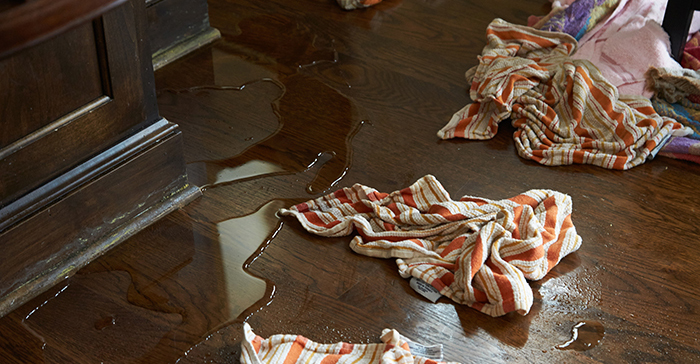Searching for Indications of Water Damage in the Bathroom
Searching for Indications of Water Damage in the Bathroom
Blog Article
Have you been looking for advice about How to Fix a Water Damage Bathroom?

The shower room is incredibly susceptible for moist buildup and possible water damage due to the constant use water in it. This short article supplies straightforward evaluation techniques to aid identifying water damages risks.
The frequent use of water in the restroom makes it extremely prone for damp accumulation and also prospective water damages. By checking it routinely, you can minimize water associated problems.
The following set of inspections is simple to perform as well as ought to be done as soon as in every three months in order to maintain your restroom healthy as well as to prevent possible water damages triggered by the bath tub, the shower, pipe joints and also plumbing, sinks, cabinets, as well as the commode
Do not overlook doing these inspections and be complete while performing them. Bear in mind that these basic examinations can save you a lot of cash by providing early indicators for water damages
Bathtub as well as Shower
The shower and also bathtub need unique focus and upkeep. Inspect the floor tiles and change if fractured. Ensure that there is no missing out on grout between the floor tiles. Examine as well as change broken caulking at joints where the wall surfaces satisfy the flooring or the tub. Obstructed drains as well as pipes issues will certainly avoid the bath tub from drying as well as may suggest significant problems underneath the bathtub. Talk to a professional instantly to stop architectural damage. Focus on stainings or soft areas around the tub wall surfaces as they may suggest an inner leak.
Plumbing
Signs for water damage are difficult to detect because a lot of pipelines are installed inside the walls.
Pay unique focus to flooring as well as wall surfaces moisture and spots as they might indicate an unnoticeable plumbing issue. Examine moisture levels in adjacent areas too.
Sinks and also Cabinets
Sinks and cabinets are subjected to wetness and also humidity daily as well as are usually overlooked. Examine frequently under the sink as well as on the kitchen counter over it. Fix any drip in the trap as it may suggest drain issues. Check out the sink, slow-moving draining pipes may indicate a blocked drain. Replace sink seals if they are split or loosened.
The Commode
The commode is an at risk water joint. Examine the water lines and also look for leaks around the toilet seat, in the hose, and under the water tank. If you spot any type of indications of wetness on the floor around the bathroom, check for leaks in the toilet rim as well as storage tank seals.
Understand that hanging bathroom bowl deodorants enhances the chances for clogs.
10 TIPS TO PREVENT WATER DAMAGE IN THE BATHROOM
The average household uses approximately 80-100 gallons of water per person per day. For a family of 4, that's almost 2,500 gallons of water a week! The largest portion of this consumption comes from bathroom use. Flushing the toilet uses the most water, followed by taking a shower or bath. With that much water running through the home, water damage in the bathroom is bound to happen. Knowing how to spot signs of a water leak is essential to preventing long-term damage. This guide provides you with tips to reduce the impact of water damage on your bathroom.
CAUSES OF BATHROOM WATER DAMAGE
Pipe breaks are the most common cause of water damage we see in our daily jobs. The age of a pipe plays a large role in a pipe break as well as corrosion. Over time, the metal begins to break down, allowing water to escape. Frozen pipe breaks are also a concern in the winter months. Toilet overflows caused by paper products or children flushing inappropriate items. Degraded caulking around the toilet or bathtub can allow water seepage, sometimes behind the fixture, into the subfloor or walls. Condensation forms when the water in a pipe is cooler than the air temperature. Beads of water form on the exterior of the pipes, sometimes so much so that the water begins to drip and pool below. Sink or shower backups created by poor drainage. HOW TO PREVENT WATER DAMAGE IN YOUR BATHROOM
Inspect your toilet supply line for worn or frayed hoses and replace them as needed. Winterize your plumbing to prevent a frozen pipe break. Use vent fans to prevent condensation that can lead to mold growth. Routinely check and replace degraded caulking around your toilet or bathtub. Increase the temperature in your toilet tank and insulate your pipes during the warm summer months to keep condensation from forming. Use child safety locks on the toilets. Flush only toilet paper. "Flushable" wet wipes are actually not good for your plumbing system. Additionally, feminine hygiene products should not be flushed. Prevent water from escaping the tub or shower. Make sure shower curtains are in good condition. Inspect shower doors and replace the seal strip if necessary. Wipe up any water that accumulates on the floor and use bath mats. Water left to sit can cause damage to the tiles and flooring. Refrain from using bath products containing heavy oils to avoid a clogged drain.

We were made aware of that article about How to Fix a Water Damage Bathroom through someone on our other site. For those who enjoyed reading our article plz remember to pass it around. Many thanks for your time. Visit us again soon.
Request Free Estimate Report this page